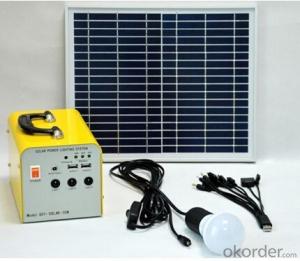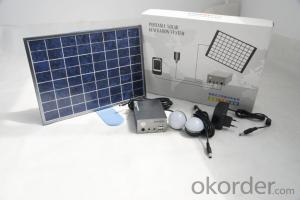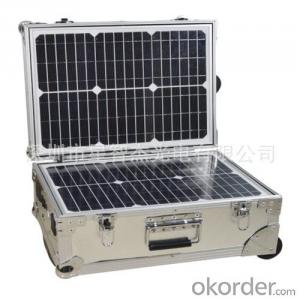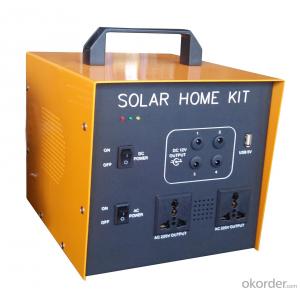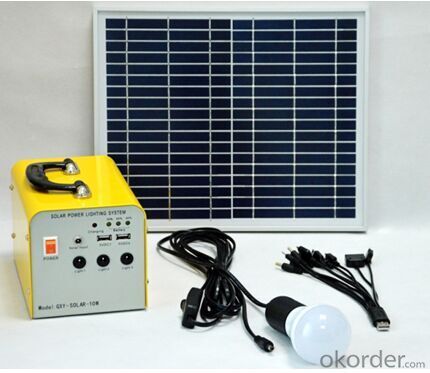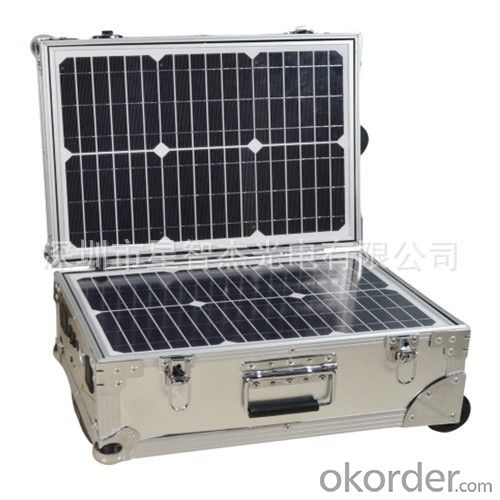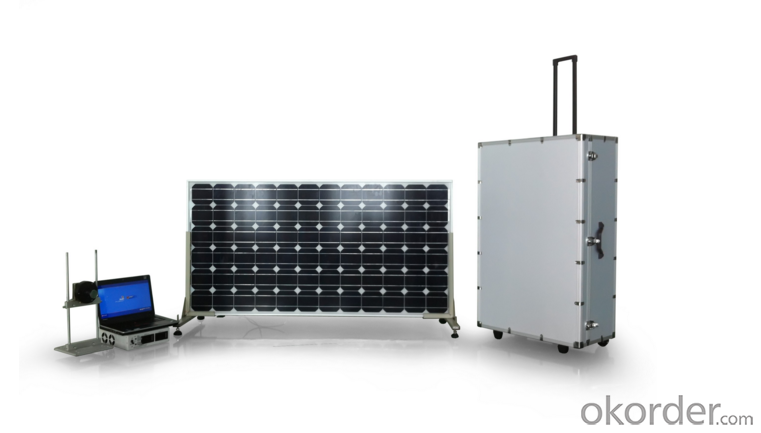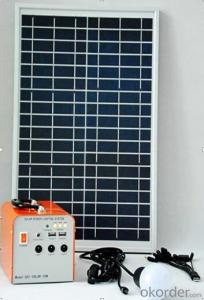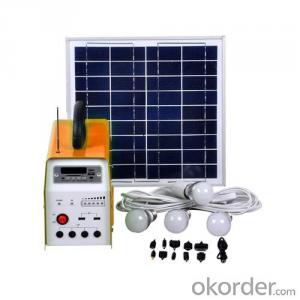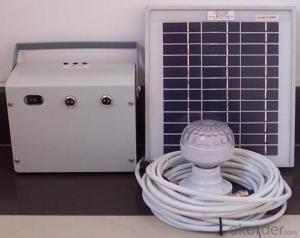Long Island Solar Energy Systems - Solar Portable System AN-S3W
- Loading Port:
- Shanghai
- Payment Terms:
- TT OR LC
- Min Order Qty:
- 0 set
- Supply Capability:
- 10000 set/month
OKorder Service Pledge
OKorder Financial Service
You Might Also Like
Specification
Description of Solar Portable System AN-S3W
Compatible portable solar power supply, also called solar mobile power, it includes: solar panel, charge controller, discharge controller, electric charge controller, inverter, outside enlarge capacity interface and battery, etc. Photovoltaic portable power supply can work in solar energy and ordinary power two modes, and can automatically switch. Photovoltaic portable power supply is used widely is the emergency relief, tourism, army, geological prospecting, archaeology, schools, hospitals, Banks, gas stations, comprehensive building, highway, substation, family camping or outdoor activities such as emergency power ideal power supply equipment.
Specifications of Solar Portable System AN-S3W
1. Solar Panel: 3W 9V
2. Battery: 6V4.5A lead-acid battery
Input terminal: 1 DC input, 9V
Output terminal: 4 output terminals, including:
1x USB output, 5V 1A;
3x DC outputs, 6V 1A
Switch: one square On/Off general switch
Indication lamp: 2 pcs; Red one is for charging indication, Green one is for operating indication.
Accessories of Solar Portable System AN-S3W
1. 2pcs 2.2W led bulbs;
2. 1pc 3m connection wire between solar panel and cabinet;
3. 2pcs lamp holder with 3m wire;
4. 1pc AC charger
Technical Data of Solar Portable System AN-S3W
| Internal Package Size (cm) | 20*18*21 |
| Packing QTY | 12 |
| External Package Size (cm) | 62*42*42 |
IMages of Solar Portable System AN-S3W
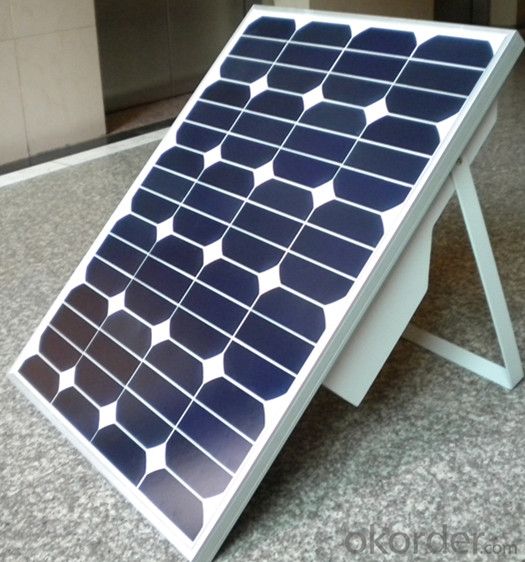

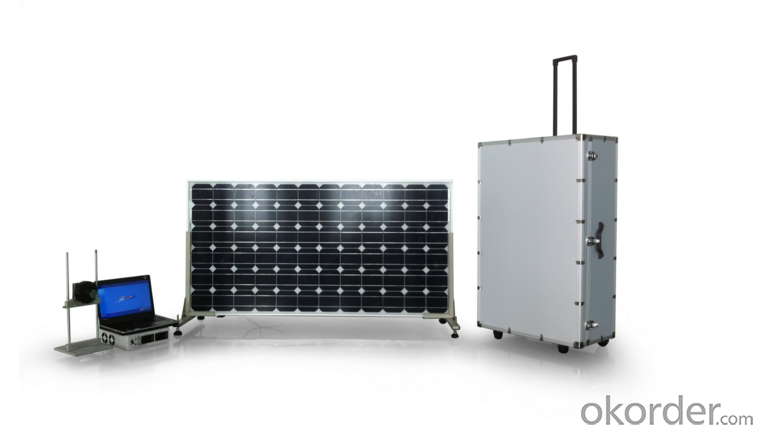
FAQ:
1. How long will my inquiry get response?
Your inquiry related to our products or prices will be replied within 24 hours.
2. Can I get professional service and suggestion?
Well-trained and experienced staffs to answer all your questions in fluent English.
3. Do you accept OEM or customized design?
OEM & ODM, any your customized lightings we can help you to design and put into product.
4. What if I need specific design?
Distributorship are offered for your unique design and some our current models.
- Q: Can solar energy systems be used for street lighting?
- Street lighting can indeed utilize solar energy systems. The popularity of solar-powered street lights is on the rise due to their ability to provide sustainable and cost-effective outdoor lighting. These systems consist of solar panels that capture sunlight during the day, converting it into electricity which is then stored in batteries. This stored energy is utilized to power the street lights at night. Not only are solar-powered street lights environmentally friendly, but they also eliminate the need for extensive wiring and electricity consumption. They can be easily installed in remote areas without access to grid power, making them a feasible option for street lighting in both urban and rural regions. In addition, solar-powered street lights offer the benefit of being independent from the main power grid, ensuring uninterrupted lighting even during power outages.
- Q: Do solar energy systems require surge protection?
- Yes, solar energy systems require surge protection.
- Q: What is the future of solar energy technology?
- The future of solar energy technology is promising and holds immense potential. With ongoing advancements in solar panel efficiency, energy storage, and grid integration, solar power is poised to become a major contributor to global energy production. As the cost of solar installations continues to decline, coupled with increased government support and public awareness of the environmental benefits, solar energy is expected to witness exponential growth in the coming years. Additionally, emerging technologies like perovskite solar cells and solar-powered water splitting hold the promise of further enhancing solar energy efficiency and expanding its applications. Ultimately, solar energy technology is likely to play a crucial role in transitioning towards a sustainable and renewable energy future.
- Q: Can a solar energy system power an entire home or business?
- Yes, a solar energy system can indeed power an entire home or business. With the right size and capacity of solar panels, combined with an efficient battery storage system, a solar energy system can generate and store enough electricity to meet the power demands of a residential or commercial property. Additionally, advancements in solar technology and energy management systems have made it easier to optimize solar energy usage and reduce reliance on the grid, making solar power a viable and sustainable solution for powering homes and businesses.
- Q: Can solar energy systems be used in areas with high levels of dust?
- Yes, solar energy systems can be used in areas with high levels of dust. While dust can potentially reduce the efficiency of solar panels, it is still possible to generate electricity from sunlight. Regular cleaning and maintenance of the solar panels can help mitigate the impact of dust on their performance. Additionally, advancements in solar panel technology, such as anti-soiling coatings and self-cleaning mechanisms, have made it easier to maintain their efficiency in dusty environments. However, it is important to note that the effectiveness of solar energy systems in dusty areas may vary depending on the severity and type of dust present.
- Q: Can solar energy systems be connected to the existing power grid?
- Yes, solar energy systems can be connected to the existing power grid. This is known as grid-tied or grid-connected solar systems. When connected, excess electricity generated by the solar panels can be fed back into the grid, allowing homeowners or businesses to earn credits or receive compensation for the power they produce.
- Q: Can solar energy be used for large-scale power generation?
- Yes, solar energy can definitely be used for large-scale power generation. With advancements in technology and decreasing costs of solar panels, utility-scale solar power plants are being built around the world to generate electricity on a massive scale. These solar power plants can provide a significant amount of clean and renewable energy to meet the increasing power demands of cities and industries.
- Q: Can solar energy systems be used in powering recycling plants or waste management facilities?
- Yes, solar energy systems can definitely be used to power recycling plants or waste management facilities. Solar energy systems harness the power of the sun to generate electricity, which can be used to operate various equipment and machinery in these facilities. Recycling plants and waste management facilities typically require a significant amount of energy to power their operations, including sorting and processing machines, conveyor belts, and other equipment. By installing solar panels on the roofs or in the vicinity of these facilities, they can generate clean and renewable electricity to significantly reduce their reliance on traditional energy sources. Solar energy systems offer several advantages for recycling plants and waste management facilities. Firstly, they provide a reliable and consistent source of energy, as the sun is abundant and available in most regions throughout the year. Unlike fossil fuels or other non-renewable energy sources, solar energy systems do not deplete natural resources or contribute to greenhouse gas emissions, making them environmentally friendly. This aligns with the sustainability goals of recycling plants and waste management facilities, which are focused on reducing the environmental impact of waste management processes. Additionally, solar energy systems can help these facilities save on energy costs. Once the initial investment in solar panels is made, the ongoing operational costs are relatively low. Furthermore, some regions offer incentives and financial support for the installation of solar energy systems, which can further offset the initial investment and make it more financially attractive. Furthermore, recycling plants and waste management facilities often have large surface areas available for solar panel installations, such as rooftops or open fields. This makes it easier to install a sufficient number of solar panels to meet the energy demands of these facilities. In some cases, excess energy generated by the solar panels can even be fed back into the electrical grid, allowing the facilities to earn revenue from the surplus electricity. In conclusion, solar energy systems can be effectively used in powering recycling plants or waste management facilities. They offer a sustainable and cost-effective solution, reducing reliance on traditional energy sources while helping these facilities achieve their environmental goals.
- Q: How do solar energy systems affect the roof's lifespan?
- Solar energy systems can actually extend the lifespan of a roof. By acting as a protective shield, solar panels can help to reduce the impact of harsh weather conditions such as rain, hail, and UV radiation on the roof. Additionally, solar panels can provide shade and insulation, thereby reducing the temperature fluctuations that can cause wear and tear on the roof. Overall, solar energy systems can contribute to the longevity and durability of the roof.
- Q: Can a solar energy system withstand extreme weather conditions?
- Yes, a solar energy system can withstand extreme weather conditions. Solar panels are designed to be durable and are built to withstand a range of weather conditions, including extreme heat, cold, wind, rain, and snow. They are made with tempered glass and are often tested to ensure they can withstand hailstorms or heavy snow loads. Additionally, solar panels are typically installed securely to withstand strong winds and are designed to be resistant to corrosion. Overall, while extreme weather conditions can have some impact on solar energy production, solar energy systems are built to withstand and continue operating effectively in a variety of weather conditions.
Send your message to us
Long Island Solar Energy Systems - Solar Portable System AN-S3W
- Loading Port:
- Shanghai
- Payment Terms:
- TT OR LC
- Min Order Qty:
- 0 set
- Supply Capability:
- 10000 set/month
OKorder Service Pledge
OKorder Financial Service
Similar products
Hot products
Hot Searches
Related keywords
